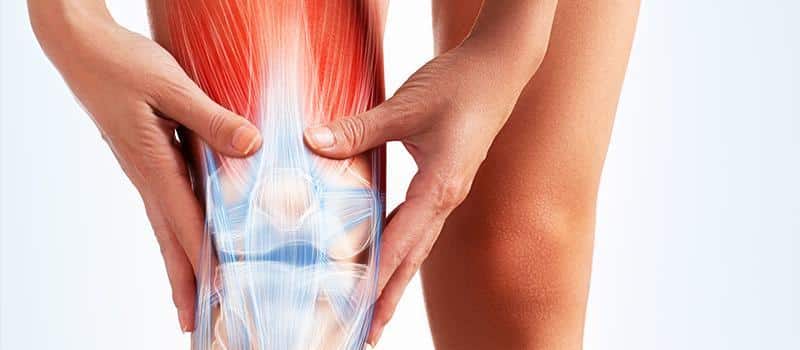Meniscus

The Meniscus
The Functions of the Meniscus
- Preventing wear, tear, and damage to the bone tissue and joint structure.
- Playing an important role in stabilizing the knee joint.
- Distributing the load that is applied to the joint.
- Absorbing shock (impact) to the joint.
- Providing compatibility between the surfaces of the knee joint.
- Ensuring smoothness of movement in the knee joint.
Risk Facktors
A meniscus injury is one of the most common types of knee injuries. It can occur in different ways among young individuals and older age groups. Meniscus injuries are more frequently observed in males. TThe higher incidence of injuries in women can be attributed to the more aggressive nature of sports activities and increased loading on the knee joint. Women are equally susceptible to these injuries and have a similar risk of getting injured as men.
Traumatic (acute) meniscus tears are commonly caused by traumas, impacts, sudden changes in direction, and sports activities. They are more frequently observed in young adults. These types of injuries occur when the knee joint experiences a forceful or sudden twisting or bending motion, often during activities that involve pivoting or rapid changes in direction. Examples of such activities include soccer, basketball, skiing, and football. The forceful movement or impact can lead to a tear in the meniscus, causing pain, swelling, and limited range of motion in the knee.
Degenerative meniscus tears are more commonly seen in individuals aged 50 and above. The reason behind this is that as years pass, the meniscus loses its elasticity and durability, becoming more prone to degeneration. Even simple movements like squatting can lead to a tear. However, degenerative meniscus tears are not exclusive to older age groups. They can also occur in young athletes due to various reasons.
Contact sports such as football, basketball, wrestling, and tennis, as well as non-contact sports, can frequently lead to meniscus injuries, especially when the foot is fixed while the body rotates. Meniscus injuries are not limited to sports activities alone. Occupations that involve frequent kneeling or being in a position that puts stress on the knee joint can also result in meniscus injuries.
How to Occure Meniscal Tear
Meniscal tears can occur due to the mismatch between the thigh bone (femur) and the shin bone (tibia), sudden movements, and the forward-backward sliding of the joint surface.
There are two types of meniscal tears: traumatic and degenerative meniscal tears.
Most common injury, foot fixed while body rotates on knee.
The Symptoms of Meniscal Tears
- During the occurrence of a tear, there is a sudden sensation of pain and a popping feeling. The pain becomes more pronounced on the inner or outer part of the knee.
- The pain worsens with movement, especially during squatting motions.
Depending on the tear type and meniscus displacement, mechanical symptoms like catching or locking can occur. - Swelling in the joint and limitations in joint range of motion can be observed.
Initially, the symptoms may not be very noticeable, especially in athletes who continue their activities. However, there is a significant risk of developing further injuries.
How Are Meniscus Tears Diagnosis?
Medical diagnosis is made through a combination of medical history and physical examination. Giving your doctor a detailed account of the injury’s occurrence is crucial. During the physical examination of the knee joint, the doctor will also assess any damage to other tissues that may have occurred during the injury. With a thorough medical history and physical examination, a significant part of the diagnosis can be made. Magnetic resonance imaging (MRI) may be used to support the diagnosis, although it does not always provide definitive results. Patient history and physical examination are pivotal in diagnosing the condition accurately. If the diagnosis remains uncertain, arthroscopic examination can be another option.
What are the Treatment Options for Meniscal Tears?
The treatment varies depending on the location and severity of the tear. Age, occupation, sports activities, and daily routines are considered when deciding the suitable treatment method.
Treatment options for meniscal tears can be broadly categorized into two main approaches.
1. Conservative treatment:
Not all meniscal tears require surgery; conservative treatment is an important alternative. Conservative treatment can be effective in specific cases, particularly in young adults and athletes with acute tears. It is also preferred in both preoperative and postoperative stages.
Preoperative rehabilitation plays a crucial role in preparing the individual for the postoperative period. Rehabilitation reduces knee joint edema, strengthens tissues, eases load, restores movement, and relieves symptoms.
The content of a rehabilitation program may include methods for the acute phase (such as manual therapy, ice, elevation, compression), strength exercises, joint mobilization techniques, balance training, flexibility exercises, and other treatment options.
2. Surgical methods:
Repair is often the preferred surgical option for meniscal injuries. The meniscus has limited blood supply, which reduces its ability to heal naturally. There are three surgical methods commonly used for treatment:
a.1 – Meniscectomy: Surgical removal of the damaged part of the meniscus.
a.2 – Meniscal repair: Preservation and repair of the meniscus is the most preferred surgical approach.
a.3 – Meniscal transplantation and “Skafold” scaffold are surgical options for replacing the meniscus.
For detailed information and make an appointment, click here.
